-
 Bitcoin
Bitcoin $114200
0.00% -
 Ethereum
Ethereum $3637
0.56% -
 XRP
XRP $2.950
-2.01% -
 Tether USDt
Tether USDt $0.9999
0.02% -
 BNB
BNB $761.0
0.55% -
 Solana
Solana $164.1
-1.38% -
 USDC
USDC $0.9999
0.02% -
 TRON
TRON $0.3332
0.36% -
 Dogecoin
Dogecoin $0.2012
-0.52% -
 Cardano
Cardano $0.7261
-1.41% -
 Hyperliquid
Hyperliquid $37.62
-2.13% -
 Stellar
Stellar $0.3930
-2.65% -
 Sui
Sui $3.441
-0.16% -
 Bitcoin Cash
Bitcoin Cash $563.8
0.70% -
 Chainlink
Chainlink $16.50
0.09% -
 Hedera
Hedera $0.2424
-0.14% -
 Ethena USDe
Ethena USDe $1.001
0.01% -
 Avalanche
Avalanche $22.20
0.00% -
 Litecoin
Litecoin $118.0
-2.48% -
 UNUS SED LEO
UNUS SED LEO $8.991
0.12% -
 Toncoin
Toncoin $3.195
-3.87% -
 Shiba Inu
Shiba Inu $0.00001217
0.12% -
 Uniswap
Uniswap $9.674
-0.21% -
 Polkadot
Polkadot $3.633
1.00% -
 Monero
Monero $295.3
-0.82% -
 Dai
Dai $0.9999
0.00% -
 Bitget Token
Bitget Token $4.321
-0.41% -
 Cronos
Cronos $0.1392
0.73% -
 Pepe
Pepe $0.00001027
-0.89% -
 Aave
Aave $258.5
0.32%
What is a sidechain and its expansion solution?
Sidechains enhance blockchain scalability and privacy by offloading transactions and enabling asset transfers via a two-way peg, without compromising main chain security.
Apr 10, 2025 at 10:56 am
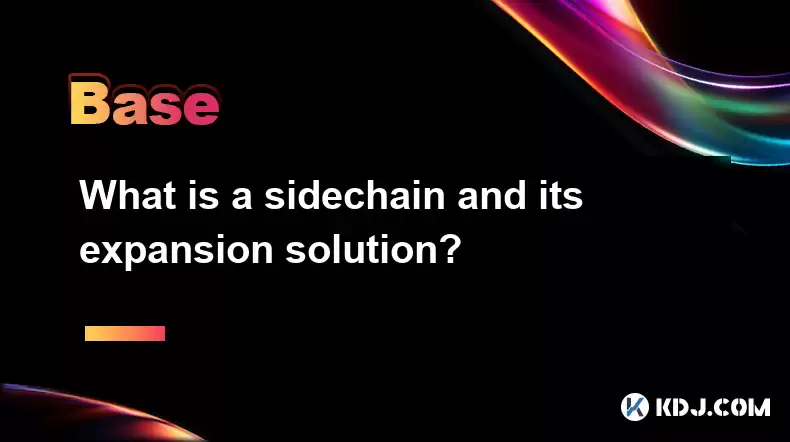
A sidechain is a separate blockchain that is attached to its parent blockchain, allowing for the transfer of assets between the two chains. This technology is designed to enhance the scalability, privacy, and functionality of the main blockchain without compromising its security. Sidechains operate independently but are connected to the main chain through a two-way peg, which enables the movement of assets back and forth. This article will delve into the concept of sidechains, their benefits, and how they serve as an expansion solution within the cryptocurrency ecosystem.
Understanding Sidechains
A sidechain is essentially a blockchain that runs parallel to the main blockchain. It allows for the transfer of digital assets from the main chain to the sidechain and vice versa. The process of moving assets between the two chains is facilitated by a mechanism known as a two-way peg. This peg locks the assets on the main chain and releases an equivalent amount on the sidechain, ensuring that the total supply of the asset remains constant across both chains.
The primary purpose of sidechains is to offload some of the transactions and computational load from the main blockchain. By doing so, sidechains can help improve the scalability of the main chain, allowing it to process more transactions per second. Additionally, sidechains can be used to test new features and functionalities without risking the stability of the main blockchain.
Benefits of Sidechains
Sidechains offer several advantages to the cryptocurrency ecosystem. One of the most significant benefits is scalability. By offloading transactions to a sidechain, the main blockchain can handle a higher volume of transactions, reducing congestion and transaction fees. This is particularly important for cryptocurrencies like Bitcoin, which have faced scalability issues due to their growing popularity.
Another benefit of sidechains is enhanced privacy. Transactions on a sidechain can be designed to be more private than those on the main chain. For example, a sidechain could implement advanced privacy features like zero-knowledge proofs, allowing users to transact without revealing their identities or transaction details.
Sidechains also enable the development and testing of new features and functionalities. Developers can experiment with new consensus mechanisms, smart contract platforms, and other innovations on a sidechain without affecting the main blockchain. This allows for more rapid development and deployment of new technologies within the cryptocurrency space.
How Sidechains Work as an Expansion Solution
Sidechains serve as an effective expansion solution by allowing the main blockchain to scale and adapt to growing demands. The process of using a sidechain as an expansion solution involves several key steps:
Asset Locking: When a user wants to move assets from the main chain to a sidechain, they first need to lock their assets on the main chain. This is done by sending the assets to a special address on the main chain, which effectively locks them and prevents them from being spent.
Asset Issuance: Once the assets are locked on the main chain, an equivalent amount of assets is issued on the sidechain. This ensures that the total supply of the asset remains constant across both chains.
Transaction Processing: The sidechain can then process transactions independently of the main chain. This allows for faster transaction processing and lower fees, as the sidechain can be optimized for specific use cases.
Asset Unlocking: When a user wants to move their assets back to the main chain, they need to send the assets on the sidechain to a special address. This triggers the unlocking of the corresponding assets on the main chain, allowing the user to access them again.
Examples of Sidechains in Action
Several projects within the cryptocurrency space have implemented sidechains to enhance their functionality and scalability. One notable example is Liquid Network, a sidechain developed by Blockstream for the Bitcoin blockchain. The Liquid Network is designed to facilitate faster and more secure transactions between exchanges and other financial institutions.
Another example is RSK, a smart contract platform that operates as a sidechain to the Bitcoin blockchain. RSK allows developers to build and deploy decentralized applications (dApps) on the Bitcoin network, leveraging the security and stability of the main chain while benefiting from the flexibility of the sidechain.
Implementing Sidechains: A Step-by-Step Guide
For those interested in implementing a sidechain, the process involves several detailed steps. Here is a comprehensive guide on how to set up a sidechain:
Define the Purpose: Start by clearly defining the purpose of the sidechain. Determine what specific problem it aims to solve and what features it will offer.
Choose a Consensus Mechanism: Select a suitable consensus mechanism for the sidechain. This could be Proof of Work (PoW), Proof of Stake (PoS), or any other mechanism that aligns with the sidechain's goals.
Develop the Sidechain Protocol: Design and develop the sidechain protocol. This involves creating the rules and logic that govern how the sidechain operates and interacts with the main chain.
Implement the Two-Way Peg: Develop the two-way peg mechanism that allows for the transfer of assets between the main chain and the sidechain. This involves creating smart contracts or other mechanisms to lock and unlock assets.
Test the Sidechain: Thoroughly test the sidechain to ensure it functions as intended. This includes testing the two-way peg, transaction processing, and any other features of the sidechain.
Deploy the Sidechain: Once testing is complete, deploy the sidechain to the main network. This involves integrating the sidechain with the main chain and making it accessible to users.
Monitor and Maintain: Continuously monitor and maintain the sidechain to ensure its stability and security. This includes updating the protocol, addressing any issues that arise, and ensuring the sidechain remains compatible with the main chain.
Challenges and Considerations
While sidechains offer numerous benefits, there are also several challenges and considerations to keep in mind. One of the main challenges is security. Since sidechains operate independently of the main chain, they may be more vulnerable to attacks. It is crucial to implement robust security measures to protect the sidechain and the assets it holds.
Another consideration is interoperability. Ensuring seamless interaction between the main chain and the sidechain can be complex. Developers need to carefully design the two-way peg and other mechanisms to ensure smooth asset transfers and transaction processing.
Regulatory compliance is also a significant consideration. Depending on the jurisdiction, sidechains may be subject to different regulatory requirements than the main chain. It is essential to understand and comply with these regulations to avoid legal issues.
Frequently Asked Questions
Q: Can sidechains be used with any blockchain?
A: While sidechains can theoretically be used with any blockchain, their implementation depends on the specific architecture and consensus mechanism of the main chain. Some blockchains, like Bitcoin, have well-established sidechain solutions, while others may require more development to support sidechains effectively.
Q: How do sidechains affect the security of the main blockchain?
A: Sidechains do not directly affect the security of the main blockchain, as they operate independently. However, the security of the sidechain itself is crucial, as any vulnerabilities could potentially be exploited to compromise assets transferred from the main chain.
Q: Are there any costs associated with using sidechains?
A: Yes, there can be costs associated with using sidechains. These may include transaction fees on the sidechain, as well as potential costs related to the two-way peg mechanism, such as locking and unlocking assets. The specific costs depend on the design and implementation of the sidechain.
Q: Can sidechains be used for private transactions?
A: Yes, sidechains can be designed to support private transactions. By implementing advanced privacy features like zero-knowledge proofs, sidechains can offer enhanced privacy compared to the main blockchain. This allows users to transact without revealing their identities or transaction details.
Disclaimer:info@kdj.com
The information provided is not trading advice. kdj.com does not assume any responsibility for any investments made based on the information provided in this article. Cryptocurrencies are highly volatile and it is highly recommended that you invest with caution after thorough research!
If you believe that the content used on this website infringes your copyright, please contact us immediately (info@kdj.com) and we will delete it promptly.
- Binance, CZ, and the FTX Fallout: The $1.8 Billion Question
- 2025-08-06 18:30:12
- Brendan Rodgers, Celtic, and the Greg Taylor Role: A Tactical Conundrum
- 2025-08-06 18:50:12
- Coinbase Stock, Investment, and Earnings: Navigating Crypto's Tides
- 2025-08-06 18:55:54
- DALPY Coin: Investor Buzz Swirls Around Upcoming 'Game-Changing' Features
- 2025-08-06 18:30:12
- BlockchainFX: Your Ticket to 1000x Crypto Gains in '25?
- 2025-08-06 19:30:12
- Dogecoin Price, Technical Indicators, and Trader Sentiment: A NYC Perspective
- 2025-08-06 19:35:12
Related knowledge
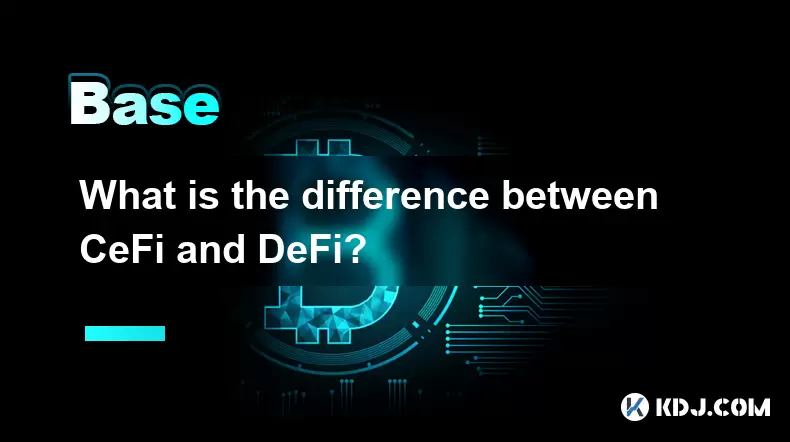
What is the difference between CeFi and DeFi?
Jul 22,2025 at 12:28am
Understanding CeFi and DeFiIn the world of cryptocurrency, CeFi (Centralized Finance) and DeFi (Decentralized Finance) represent two distinct financia...

How to qualify for potential crypto airdrops?
Jul 23,2025 at 06:49am
Understanding What Crypto Airdrops AreCrypto airdrops refer to the distribution of free tokens or coins to a large number of wallet addresses, often u...
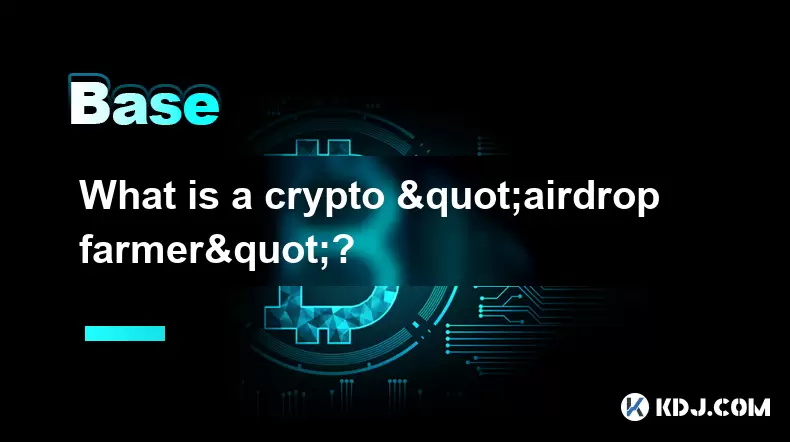
What is a crypto "airdrop farmer"?
Jul 24,2025 at 10:22pm
Understanding the Role of a Crypto 'Airdrop Farmer'A crypto 'airdrop farmer' refers to an individual who actively participates in cryptocurrency airdr...
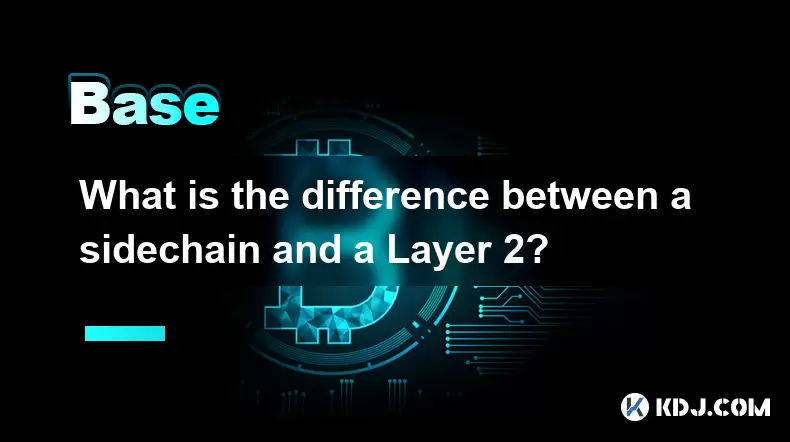
What is the difference between a sidechain and a Layer 2?
Jul 20,2025 at 11:35pm
Understanding the Concept of SidechainsA sidechain is a separate blockchain that runs parallel to the main blockchain, typically the mainnet of a cryp...

What is the Inter-Blockchain Communication Protocol (IBC)?
Jul 19,2025 at 10:43am
Understanding the Inter-Blockchain Communication Protocol (IBC)The Inter-Blockchain Communication Protocol (IBC) is a cross-chain communication protoc...
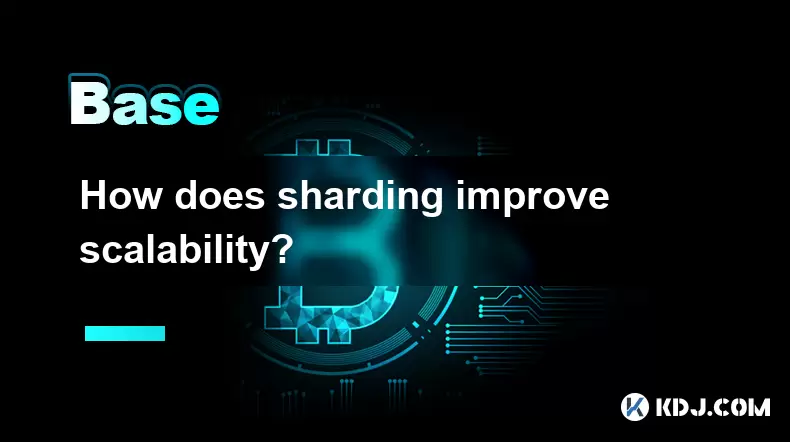
How does sharding improve scalability?
Jul 20,2025 at 01:21am
Understanding Sharding in BlockchainSharding is a database partitioning technique that is increasingly being adopted in blockchain technology to enhan...

What is the difference between CeFi and DeFi?
Jul 22,2025 at 12:28am
Understanding CeFi and DeFiIn the world of cryptocurrency, CeFi (Centralized Finance) and DeFi (Decentralized Finance) represent two distinct financia...

How to qualify for potential crypto airdrops?
Jul 23,2025 at 06:49am
Understanding What Crypto Airdrops AreCrypto airdrops refer to the distribution of free tokens or coins to a large number of wallet addresses, often u...

What is a crypto "airdrop farmer"?
Jul 24,2025 at 10:22pm
Understanding the Role of a Crypto 'Airdrop Farmer'A crypto 'airdrop farmer' refers to an individual who actively participates in cryptocurrency airdr...

What is the difference between a sidechain and a Layer 2?
Jul 20,2025 at 11:35pm
Understanding the Concept of SidechainsA sidechain is a separate blockchain that runs parallel to the main blockchain, typically the mainnet of a cryp...

What is the Inter-Blockchain Communication Protocol (IBC)?
Jul 19,2025 at 10:43am
Understanding the Inter-Blockchain Communication Protocol (IBC)The Inter-Blockchain Communication Protocol (IBC) is a cross-chain communication protoc...

How does sharding improve scalability?
Jul 20,2025 at 01:21am
Understanding Sharding in BlockchainSharding is a database partitioning technique that is increasingly being adopted in blockchain technology to enhan...
See all articles

























































































